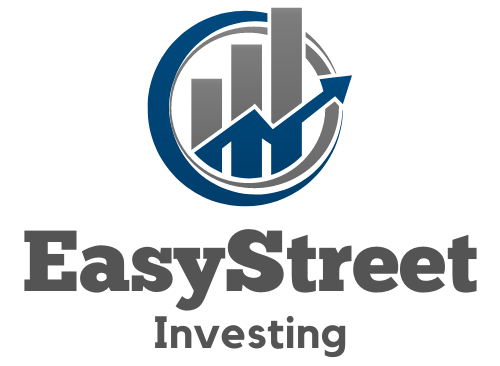Navigating the shifting tides of interest rates can be a daunting task for high-yield investors. With each central bank announcement, the landscape tilts, often sending ripples through your investment strategy. In this article, we’re diving into the art of staying afloat amidst these changes. You’ll learn how to adjust your sails and keep your portfolio buoyant, ensuring that your returns remain robust even when the economic waters get choppy.
As an investor, grappling with interest rate fluctuations is akin to reading a complex map. But fear not; we’re here to decode the signs and signals. By understanding the interplay between rates and yields, you can pinpoint opportunities that others might miss. We’ll explore savvy moves that can cushion your investments from rate hikes and identify those hidden gems that flourish when rates fall. Get ready to chart a course through the dynamic world of high-yield investing, where being well-prepared means you won’t just survive—you’ll thrive.
Important Highlights
1. Understand the relationship between interest rates and high-yield investments: As the Federal Reserve adjusts interest rates to manage economic growth, high-yield investments often feel the impact. When rates rise, existing bonds with lower interest payouts become less attractive, leading to potential declines in their prices. Conversely, if rates fall, the higher yields on these investments can become more appealing, potentially increasing their value. Investors should monitor Federal Reserve announcements and economic trends to anticipate shifts in interest rate policies.
2. Diversification is crucial in a fluctuating rate environment: To mitigate risks associated with changing interest rates, investors should diversify their high-yield portfolios across various sectors and credit qualities. This strategy can help balance out the negative effects that a rate hike might have on certain bonds while capitalizing on areas that might benefit from such changes. A mix of short- and long-duration bonds can also help manage sensitivity to interest rate movements.
3. Consider active management for high-yield investments: Active fund managers who specialize in high-yield investing have the expertise to analyze market conditions and adjust holdings accordingly. They can navigate through credit risks and identify undervalued opportunities that may arise due to volatility caused by rate changes. By leveraging active management, investors gain access to professional decision-making that targets performance in a range of interest rate scenarios.
4. Keep an eye on credit spreads: Credit spreads—the difference in yield between high-yield bonds and risk-free government securities—can indicate how much additional return investors require for taking on extra risk. In times of rising rates, spreads may widen as investors demand higher yields for assuming the increased risk of default that comes with economic uncertainty. Monitoring these spreads helps investors gauge market sentiment and make informed decisions about entry and exit points in their high-yield positions.
5. Stay informed about macroeconomic indicators: Economic data like inflation reports, employment figures, and GDP growth play a significant role in influencing interest rate decisions and bond market dynamics. High-yield investors should stay updated with this information as it provides clues about future interest rate moves by central banks. Tools such as yield curve analysis can offer valuable insights into economic expectations and potential impacts on various segments of the bond market.
Understanding the Correlation between Interest Rates and High-Yield Investments
Investors must grasp the complex relationship between interest rates and high-yield investments. When central banks adjust interest rates, it directly impacts bond yields, particularly affecting high-yield bonds’ prices. As interest rates rise, existing bonds with lower rates become less attractive, causing their prices to drop to align yields with newer issues. Conversely, when rates fall, existing higher-yielding bonds gain in price. It’s crucial for investors to monitor these changes and adjust their portfolios accordingly.
Strategies to Mitigate Risk in a Volatile Interest Rate Environment
Diversification remains a key strategy in mitigating risk amid fluctuating interest rates. By spreading investments across various sectors and maturities, one can reduce the impact of rate changes on their overall portfolio. Additionally, ladder strategies—investing in bonds that mature at different times—can provide a steady flow of income while managing reinvestment risks associated with changing interest rates.
High-Yield Bond Funds vs Individual Bonds: Pros and Cons
Choosing between high-yield bond funds and individual bonds is a critical decision for investors. Bond funds offer professional management and diversification but can be more sensitive to interest rate shifts due to continuous buying and selling within the fund. Individual bonds allow for strategic buying and holding until maturity, potentially mitigating price volatility. However, they require more due diligence and carry higher transaction costs.
Interest Rate Predictions and Their Impact on High-Yield Portfolios
Staying abreast of economic forecasts is essential when navigating high-yield investing landscapes. Interest rate predictions by financial institutions like the Federal Reserve can signal potential market movements. Investors should align their expectations with these forecasts to anticipate adjustments needed for their high-yield portfolios.
The Role of Credit Ratings in High-Yield Investment Decisions
Credit ratings significantly influence high-yield investment decisions as they indicate an issuer’s creditworthiness. A downgrade can increase yield but also risk, while an upgrade could decrease yield yet signify stability. Maintaining vigilance over credit rating changes allows investors to act swiftly in rebalancing their holdings to optimize returns against prevailing interest rates.
Tax Implications of High-Yield Investments During Interest Rate Shifts
The tax consequences of high-yield investing can change with interest rate movements. For instance, bonds purchased at a premium or discount may have different tax treatments on accrued interest or capital gains. Investors must consult with tax professionals to understand these implications fully and make informed decisions based on both tax efficiency and investment performance.
Incorporating Derivatives to Hedge Against Interest Rate Fluctuations
Sophisticated investors often incorporate derivatives like interest rate swaps or options into their investment strategies as hedges. These instruments can provide a buffer against adverse movements from rate changes but require a deep understanding of the mechanisms involved.
Evaluating Duration in High-Yield Bond Selection
Bond duration measures how much bond prices are likely to change when there is an adjustment in interest rates. Selecting high-yield bonds with shorter durations may help reduce sensitivity to rate hikes while still providing attractive income opportunities.
Tips for Monitoring Economic Indicators That Influence Interest Rates
- Regularly review reports on inflation trends, as rising inflation often leads central banks to hike interest rates.
- Analyze employment statistics since strong job growth may prompt rate increases amid economic heating concerns.
- Stay updated on GDP growth figures; a robust economy could lead to higher rates as a measure against inflationary pressures.
- Monitor central bank announcements and minutes from their meetings for insights into future monetary policy directions.
? What Are Some Key Considerations When Adjusting High-Yield Investments?
- Evaluate portfolio allocation regularly in response to changing economic conditions.
- Prioritize maintaining balance between yield generation and principal protection.
- Fine-tune your entry and exit points based on technical analysis alongside rate trend assessments.
- Leverage professional advice from financial advisors regarding shifts in investment strategies during different rate environments.
- Maintain awareness of global economic events that could indirectly affect domestic interest rates and influence your high-yield positions.
Frequently Asked Questions
How do interest rate changes impact high-yield investments?
When interest rates rise, bond prices typically fall, and vice versa. This inverse relationship means that high-yield investments, such as junk bonds, may decrease in value as rates climb. However, since these investments offer higher returns to compensate for increased risk, they might still appeal to some investors seeking more substantial income streams.
What strategies can investors use to manage risk during rate fluctuations?
Investors can diversify their portfolios across various asset classes and maturity dates or consider laddering strategies to spread out exposure. Additionally, staying informed about economic trends helps in making timely adjustments to one’s investment strategy.
Is it better to invest in high-yield options before or after a rate hike?
The timing depends on individual investment goals and market conditions. Before a hike, you might lock in higher yields; however, if rates continue to rise, newer issues may offer even better returns. Careful analysis and consultation with a financial advisor are recommended.
Can high-yield investments still be profitable in a rising rate environment?
Yes, they can be profitable due to their higher interest payments, which may provide a cushion against the impact of rising rates. However, it’s crucial to weigh the rewards against potential risks like credit default.
How often should I review my high-yield investments when interest rates change?
Regular reviews are vital. A good practice is to reassess your portfolio quarterly or whenever there’s significant rate movement. Staying proactive helps you adjust your holdings appropriately.
What indicators should I look for concerning future interest rate changes?
Keep an eye on reports from central banks, inflation data, and economic growth indicators as these can signal potential changes in interest rates.
How does inflation affect high-yield investing during varying interest rates?
Inflation can erode the real return on your investments. High-yield options may help offset this effect somewhat because of their higher interest payouts compared to standard bonds.
Should I have an exit strategy for my high-yield investments?
Absolutely. An exit strategy protects your capital from significant losses and locks in gains. It’s important to define at what point or under which conditions you would sell your investment.
In a low-rate environment, are high-yield investments the best option?
In scenarios where interest rates are low, high-yield investments might seem attractive due to their higher return potential; however, it’s essential not to overlook the accompanying risks.
How do I balance yield and risk when selecting high-yield investments?
Finding the right balance involves understanding your own risk tolerance and financial goals. Compare the yield against the investment’s credit quality and duration—higher yields often come with higher risks.
Closing Insights on High-Yield Investments Amidst Rate Shifts
Navigating through the ebbs and flows of interest rate changes while investing in high-yield opportunities demands both diligence and flexibility. By staying knowledgeable about market trends and maintaining a diversified portfolio suited to your risk profile, you can work towards optimizing your returns without losing sight of potential pitfalls. Remember that while yield is tempting, it must always be weighed against possible risks.
In conclusion, whether you’re new to high yields or an experienced investor adapting to rate shifts, remaining vigilant and responsive will serve as your compass in the dynamic landscape of investing. Aligning with professional advice tailored to your specific needs can also prove invaluable as you chart your course through these ever-changing waters.”

